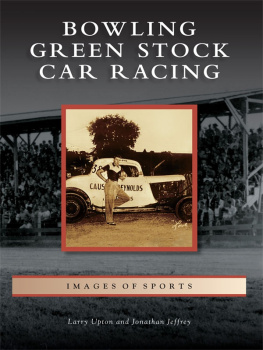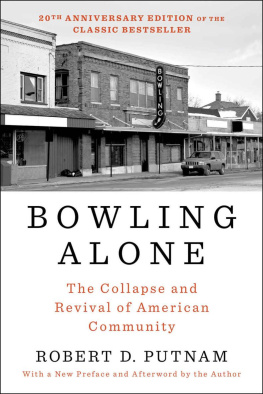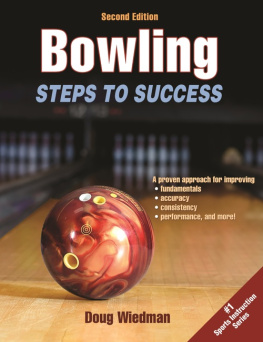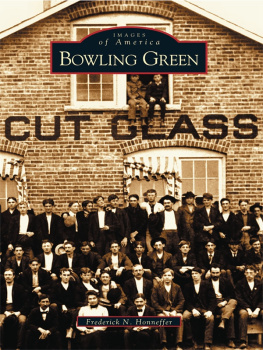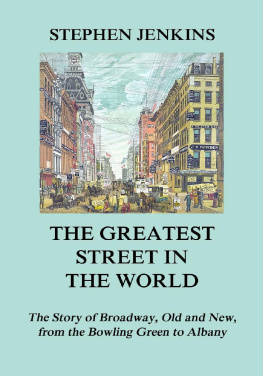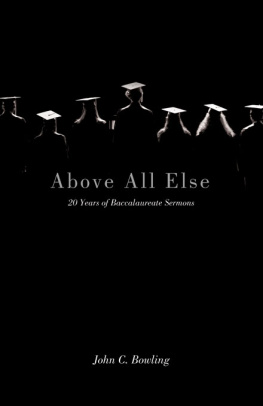
IMAGES
of America
BOWLING GREEN
A TOWN AND GOWN HISTORY
ON THE COVER: The corner of Main and Wooster Streets (the four corners) has always been congested with shoppers. The photograph, which was taken in front of Lloyd Walgreen Agency (Centre Drugs) at 102 North Main Street, features a group of Bowling Green State University (BGSU) students. (Courtesy of BGSU-CAC.)
IMAGES
of America
BOWLING GREEN
A TOWN AND GOWN HISTORY
Stephen M. Charter

Copyright 2015 by Stephen M. Charter
ISBN 978-1-4671-1441-0
Ebook ISBN 9781439652633
Published by Arcadia Publishing
Charleston, South Carolina
Library of Congress Control Number: 2014958322
For all general information, please contact Arcadia Publishing:
Telephone 843-853-2070
Fax 843-853-0044
E-mail
For customer service and orders:
Toll-Free 1-888-313-2665
Visit us on the Internet at www.arcadiapublishing.com
To all of those who have contributed to strengthening the town and gown relationship between Bowling Green, Ohio, and Bowling Green State University
CONTENTS
ACKNOWLEDGMENTS
The Center for Archival Collections (CAC) was established in 1969 as the Northwest Ohio-Great Lakes Research Center. The original mission of the center was to collect, preserve, and make accessible primary-source material related to the history of Northwest Ohio, the Great Lakes, and Bowling Green State University. Rare books and special collections were added later. The centers diverse holdings include archives, manuscripts, newspapers, and photographs. Unless otherwise noted, all images appearing in this book were graciously provided by the Center for Archival Collections.
I wish to thank my editor, Liz Gurley, for her kind assistance, guidance, and patience. I would like to especially thank my devoted colleagues Samantha Ashby, Melinda Charter, Kathy Gardner, Bob Graham, Libby Hertenstein, Eric Honneffer, Mike Intranuovo, Annie Land, and Marilyn Levinson, as well as my former staff members Lee McLaird and Dana Nemeth, for their encouragement and support. Thank you to Richard Wright, Paul Yon, Ann Bowers, and Ann Jenks for contributing greatly to my career pursuits. Janet Parks and other close friends, thank you for encouraging me to move onward and upward. Lastly, I wish to thank my family.
INTRODUCTION
Bowling Green, Ohio, began as a small settlement on the sand ridges of the Great Black Swamp of Northwest Ohio and became the county seat of Wood County at the center of a flourishing agricultural region. It developed into a prosperous boomtown following the discovery of natural gas and oil in the surrounding area, and when most of these natural resources were nearly exhausted, it was selected as the home of Bowling Green State Normal College, now Bowling Green State University.
At the tail end of gas- and oil-boom-spurred prosperity, a group of concerned, enthusiastic Bowling Green citizens met on the evening of April 7, 1907, at the Wood County Courthouse to discuss strategies for securing their town as the site of a planned Northwest Ohio normal school. If successful in their efforts, they would insure the future growth and expansion of their town. It was thought that in addition to economic benefits, the school would bring cultural enrichment to the community. Bowling Green was centrally located and easily accessible by various modes of transportation. One of the significant initiatives of the group was the publication of an attractive souvenir booklet that highlighted the exceptional advantages of Bowling Green as a location for the school. The booklet included 28 halftone photographs of streets and public buildings taken by local photographer James A. Walker. Copies were sent to members of the state legislature and sold to the public for $1 each. The collaborative work of the local community was successful in bringing the school to Bowling Green. The foundation of a mutually beneficial town and gown relationship had been laid.
The community continued to serve as local advocates through the years. In 1929, a Bowling Green resident, state representative Myrna Reece Hanna, cosponsored a bill to enlarge the scope of Bowling Green State Normal College. A liberal-arts program was established in addition to a college of education with four-year bachelor of science degree-granting status. In 1933, during the Great Depression, local community advocacy in the form of the Northwestern Ohio Educational Protective Association saved Bowling Green State College from closure and conversion into a state welfare institution. In 1935, a bill was passed that authorized the creation of colleges of business administration and liberal arts. Graduate instruction leading to a master of arts degree was also authorized. Bowling Green State College became Bowling Green State University at that time. During World War II, when enrollment declined, the university became the home of the V-5 and V-12 naval training programs. The university purchased a 120-acre site for the construction of an airport to meet the needs of the V-5 naval pilot training program. Local high school teachers were hired as supplemental instructors for both programs, due to a wartime shortage of faculty members.
The influx of V-5 and V-12 cadets provided stability to the local economy. The wartime prosperity for city and university was sustained by the arrival of veterans who came to take advantage of their GI Bill educational benefits. The campus expanded to meet the needs of an expanding enrollment. Bowling Green businesses, including bars, gas stations, motels, restaurants, retail stores, and theaters have benefited significantly from the increased student population. Families and friends visiting their students, attending commencement ceremonies, or participating in athletic and cultural activities have been vital in boosting the local economy, as visitors patronize local businesses. Many local businesses have had contracts with the board of trustees to provide goods and services. Some of those included A. Froney & Company, Hankey Lumber, Home Steam Laundry, and Maas Brothers Grocery.
Diverse university-sponsored cultural, educational, and recreational activities enrich the lives of Bowling Green residents. Cultural activities have included School of Art exhibits and educational programs, dramatic presentations or productions at various performance venues such as the Joe E. Brown Theatre, Lillian Gish Film Theater, and Eva Marie Saint Theatre, and the Wolfe Center for the Arts, Ice Horizons at the Ice Arena, and musical concerts and educational programs at the Moore Musical Arts Center. Recreational activities held at the Anderson Arena, Ice Arena, Doyt L. Perry Stadium, Perry Field House, Stroh Center, and Student Recreation Center have enhanced the physical wellbeing of local residents.
Bowling Green State University has been a major employer in the community since its founding. Employees who have been transplants, as well as those who have been longtime residents, have helped to improve the community as they have shared their expertise, interests, and talent in collaborative activities or initiatives. The first annual May Festival in 1915 and the Not in Our Town Movement in 2013 are just two examples of such enterprises.
Students, even though in the community for a short time, have always provided service to their temporary home. Alumni in diverse occupations or pursuits in all parts of the world have brought recognition to both town and gown. Included are actors, actresses, authors, artists, business executives, civic leaders, educators, journalists, Olympic athletes, and politicians. Some alumni have become permanent residents, or townies, who have contributed to Bowling Green in various walks of life.
Next page

